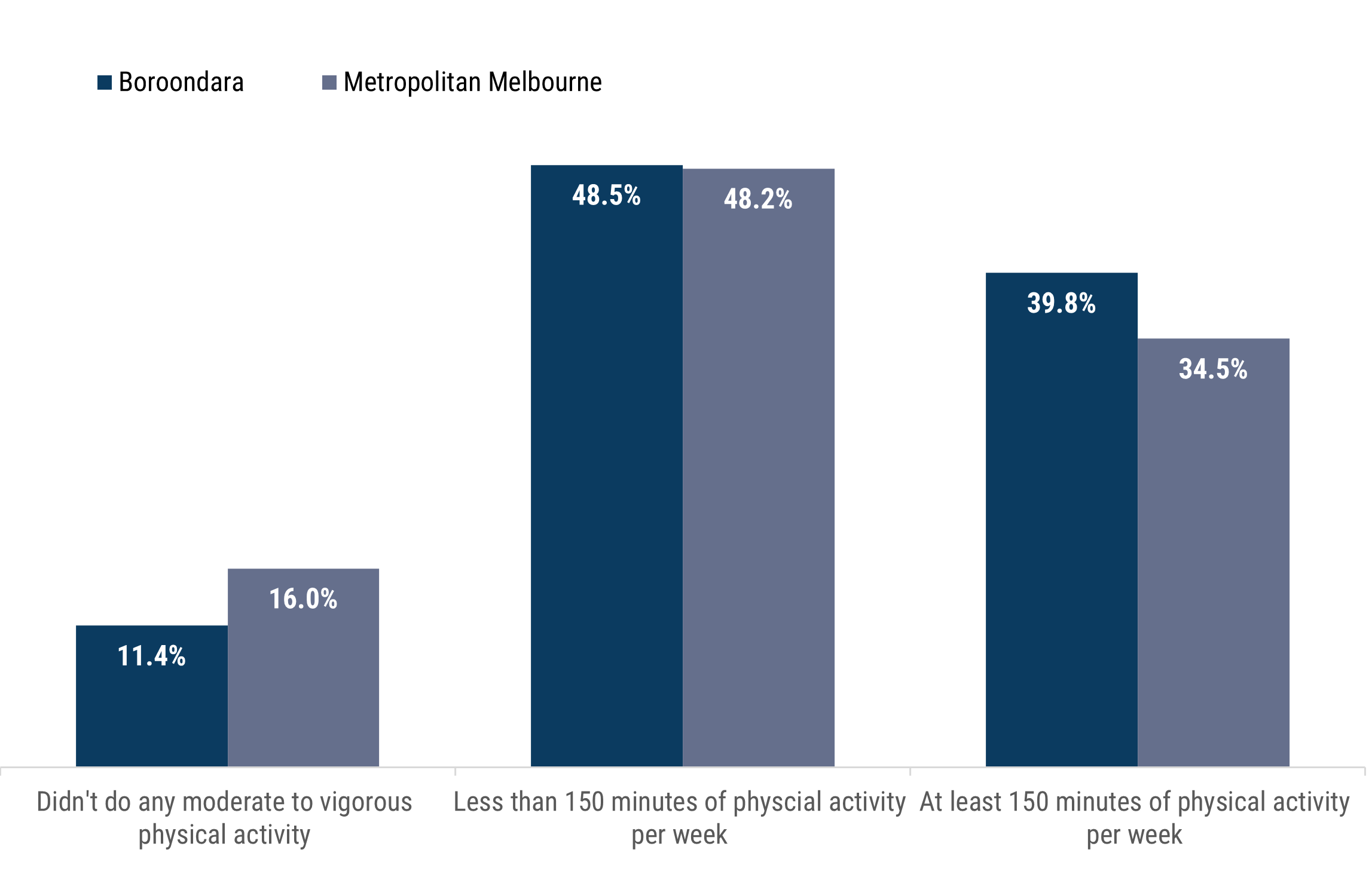As well as helping to prevent chronic disease, physical activity promotes mental wellbeing and social connection, increases productivity and can lead to positive changes to the environments we live and play in (VicHealth 2023).
The Victorian Population Health Survey 2023 included questions about time spent on physical activity (for example sport, exercise, brisk walking, cycling, or to get to and from places, but not included house work or physical activity that is part of a job). Based on their answers, respondents are categorised as:
- doing no moderate or vigorous physical activity
- doing less than 150 minutes of moderate to vigorous physical activity per week
- doing at least 150 minutes of moderate to vigorous physical activity per week.
Almost 2 in 5 Boroondara adults (18+) did at least 150 minutes of exercise (Figure 1).

Figure 1: most Boroondara adults do some exercise, but more than 1 in 10 do not.
Data source: Victorian Population Health Survey Dashboard, 2023.
Note: category values do not sum to 100% because “no response” data is not shown in the chart.
Boroondara residents are more likely to do at least 150 minutes of moderate to vigorous physical activity per week than their metropolitan Melbourne counterparts, but they are also more likely to sit for 8 or more hours during an average weekday according to the 2023 Victorian Population Health Survey (33.7% compared to 29.8% for metropolitan Melbourne).
This may be linked to the occupational profile of Boroondara residents. At the 2021 Census, 9.1% of employed Boroondara residents were technicians and trades workers or labourers compared to 19.9% of employed residents across metropolitan Melbourne.
The built environment can influence physical activity levels (Australian Institute of Health and Welfare 2024) and according to the Australian Urban Observatory, Boroondara is among the top 27% of Melbourne Local Government Areas in terms of walkability for transport, which they measure based on:
- land use mix and services of daily living (something to walk to)
- street connectivity (a way to get there)
- dwelling density.
Overweight and obesity
Being physically active and having a healthy diet reduces risk factors for disease such as being overweight and obesity (Australian Institute of Health and Welfare, 2017), a leading cause of preventable illness (Victorian Government, 2019).
The 2023 Victorian Population Health Survey has 46.9% of Boroondara adults as overweight or obese, but they are less likely to be overweight or obese than the metropolitan Melbourne average, 52.3% .
Children and young people
Healthy eating and physical activity are important for children and young people, and childhood and adolescence are stages where good habits can be formed for adulthood. (Due et al 2011, cited in Australian Institute of Health and Welfare, 2021)
The Victorian Population Health Survey, the source of most data presented on this page, does not capture information from people under 18 years of age. The Victorian Government’s Victorian Child and Adolescent Monitoring System portal presents data relating to children and young people and key health outcomes, including healthy eating, physical activity and overweight and obesity.